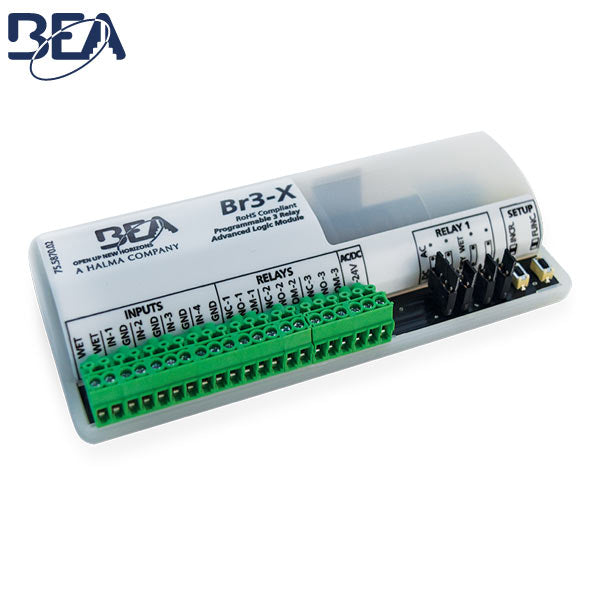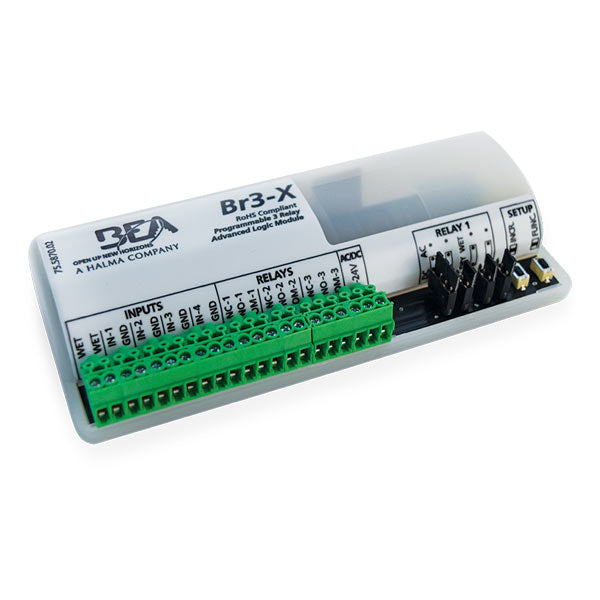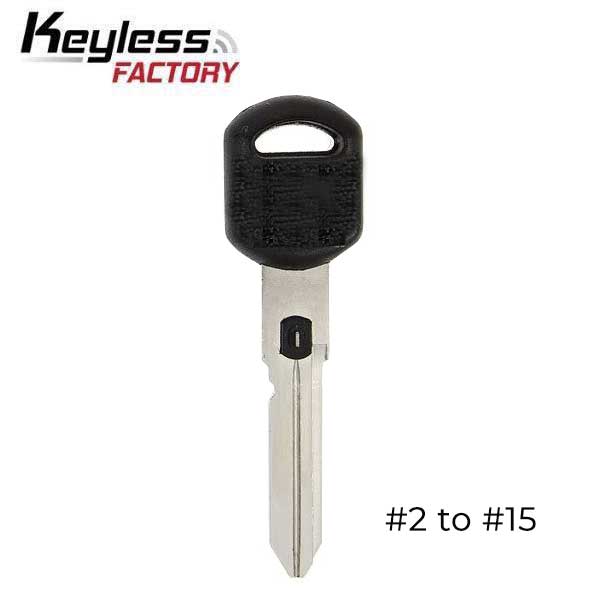Description
BEA’s BR3-X provides both simple and advanced logic controls. Common uses for the BR3-X include automatic pedestrian doors, access control, industrial automation and single-occupancy restrooms.
Features
Customizable
– Versatility with 13 programmable logic functions for the BR3-X
Intuitive Programming
– Two-button programming combined with dual seven-segment display provides simple setup
Integrated Relays
– Two 3-AMP relays and one 1-AMP relay, all with built-in surge suppression, eliminates the need for external components when installing some electric locking devices
On-Board Power
– WET output with AC / DC voltage for powering an electric locking device directly from the module
Specifications
Supply Voltage
12 – 24 VAC / VDC ±10%
Power Consumption
30 – 130 mA; DRY Output
Temperature Range
-15 – 150 °F
Dimensions
5-1/5″ (W) x 1″ (H) x 2-1/5″ (D)
Relay Hold Time
Up to 60 seconds per relay
Delay Between Relays
Up to 60 seconds per relay with 1/4,1/2 and 3/4 second options
Housing Material
ABS Plastic
Input Specification
Inputs 1, 2, 3, 4 – DRY contact
WET Input – 5 – 24 VAC / VDC ±10%
Contact Rating
Relay 1 (DRY) – 3 A @ 24 VAC / 30 VDC
Relay 1 (WET) – 1 A
Relay 2 – 3 A @ 24 VAC / 30 VDC
Relay 3 – 1 A @ 24 VAC / 30 VDC
Function Table
BR3-X Function
Description
10
Timer
11
Ratchet / Latching
22
2 Relay Sequence + Inhibitor
28
2 Relay Sequence + Door Position
29
Deactivation Time
36
3-Relay Sequencer + ‘1-shot’
37
3-Relay Sequence with ‘Independent Relay’
50
Interlock Timer
55
Interlock Ratchet / Latching
65
2-Way, 2 Relay Sequence
nL
Normally Locked Restroom
nU
Normally Unlocked Restroom
dn
3-Relay Sequencer + ‘Day / Night Mode’
00
Disable
Downloads
Data Sheet
User Guide
Quick Guide





